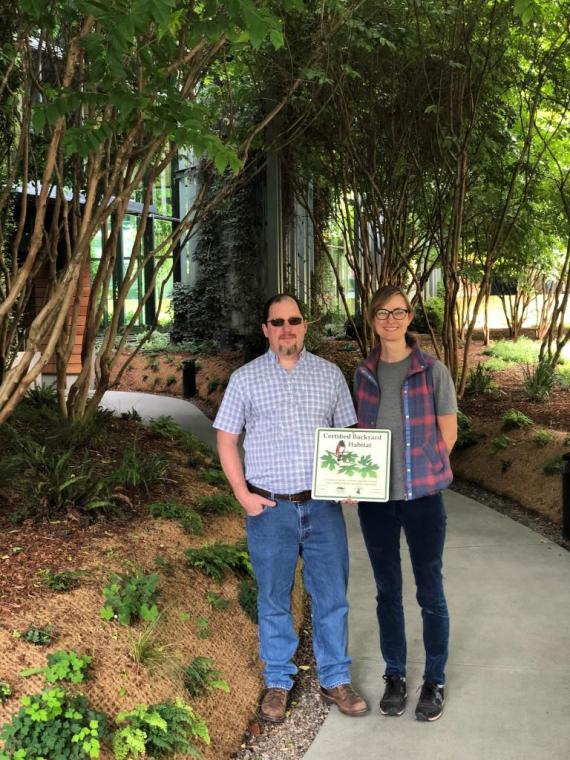Edith Green-Wendell Wyatt Federal Building earns Silver Backyard Habitat Certification

In the middle of a hectic work day, do you ever wonder how to reset your stress clock to get through the rest of the day? If you work in or around the Edith Green-Wendell Wyatt (EGWW) Federal Building you may be in luck. Thanks to the efforts of Building Manager John Gregory, the EGWW earned a ‘Silver’ certification from the Backyard Habitat Certification Program (BHCP) in early June, creating a peaceful way station for both small wildlife and people.
The BHCP aims to transform outdoor habitats into eco-friendly environments that create green corridors to encourage wildlife, birds, and plants into urban areas, creating an oasis where people can relax and unwind as well.
John started the journey with habitat restoration years ago at his home when the national chapter of the organization assessed his yard. He was thrilled when the Audubon Society placed his home on a metro garden tour for native plants and he garnered recognition for his “rain drip” watering system. John’s mature natural landscaping houses an abundance of not only native plants, but birds and other small wildlife.
When the EGWW Federal Building landscaping started to die off in places, John began to investigate how he could apply the same principles at work. He met with the EGWW landscaping contractor and the original landscape Architect to come up with a plan to work toward the Certification.
John planted native Oregon plants, installed a bird bath, bird habitat and feeders, a mason bee habitat, and hummingbird feeders to attract wildlife. Now the space is a bustle of activity from a diverse population of birds, squirrels, and beneficial insect populations.
The plan he shaped fit in well with the long-term plans to restore the landscaping. Using native plants to work toward a viable ecosystem that attracts positive species to the habitat creates a more sustainable environment that reduces GSA’s long term maintenance costs.
John’s efforts with the Backyard Habitat certification also built on the original intent behind the EGWW Modernization Project completed in 2013, which targeted sustainability as a core outcome. One feature installed during the remodel—a 165 gallon cistern—directly supports the Backyard Habitat Program criteria. It conserves water and promotes effective stormwater management by catching rain water and condensation from air conditioning coils to irrigate the landscaping.
“I just wanted to do the right thing for the environment and urban wildlife population,” said John when asked why the project meant so much to him. He was thrilled that the effort earned the program’s Silver designation during the first assessment. “Usually it takes multiple visits and many modifications to reach silver status in a building like this,” John noted.
What’s next for the EGWW Backyard Habitat? “I would love to see us hit ‘Gold’ someday,” reflected John. But until then, the results of the Silver certification will feed the “soul of the city” with a welcome slice of Oregon’s flora and fauna.

 U.S. General Services Administration
U.S. General Services Administration